Do you know about fruits with iron? Iron is a really important metal in your body – it is used to transport oxygen around the body, in the form of hemoglobin (which is what red blood cells are full of).
Being even just slightly deficient in this important metal can cause anemia (which results in both fatigue and weakness), and a more severe, chronic deficiency can result in your organs failing.
However, having too much iron in your system can lead to the chemical production of free radicals, which are harmful, volatile single iron atoms.
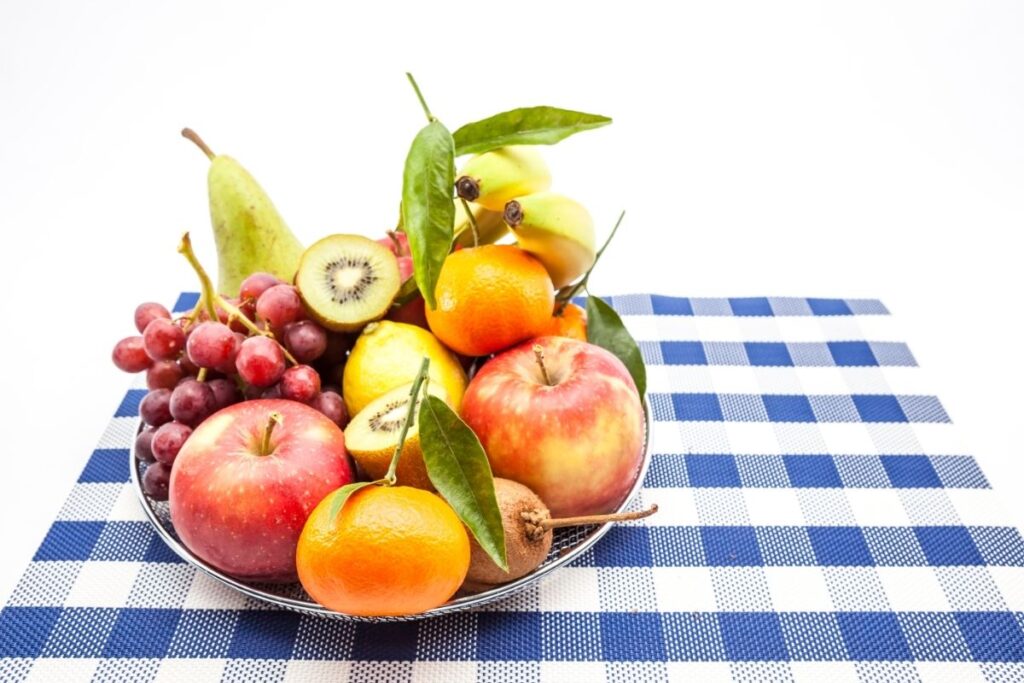
These atoms can interfere with the process of metabolism in the body (which is the production of energy, through the processing of oxygen and food).
This causes damage to your essential organs – like the heart and the liver.
So striking the balance between having too little and too much iron is really important – thankfully, you would need to eat quite a lot of iron to incur any of the bad side effects that it can cause.
Having anemia is far more common (especially in those who menstruate, and menstruation leads to a lot of blood, and therefore a lot of iron).
To make sure that you are eating all the necessary iron doesn’t mean that you have to go running to the butcher’s to buy a huge steak, though – you can get plenty of fruits that are iron-rich too.
If you think that you are low in iron, you should try to incorporate more of the foods that we have listed below into your diet.
How Much Iron You Should Be Getting
There are different daily recommended intakes and allowances, dependent on your gender and your state.
A woman should be getting about 18 mg of iron a day, whereas men should only be getting 8 mg to sustain healthy iron levels (as they don’t lose any blood and iron during the menstrual cycle).
A pregnant woman has an even higher daily allowance – 27 mg per day – because they are growing a whole other person.
In addition to gender and pregnancy, diet also impacts your recommended daily intake of iron.
Non-heme iron (which is found in whole plant foods, such as fruit, veg, legumes, nuts, and seeds) is a little harder for your body to absorb than heme iron (which is found in meat, poultry, fish, and seafood).
This means that vegetarians and vegans are recommended to consume a dose of iron that is 1.8 times higher than the recommended daily intake for meat-eaters.
1. Dried Apricots
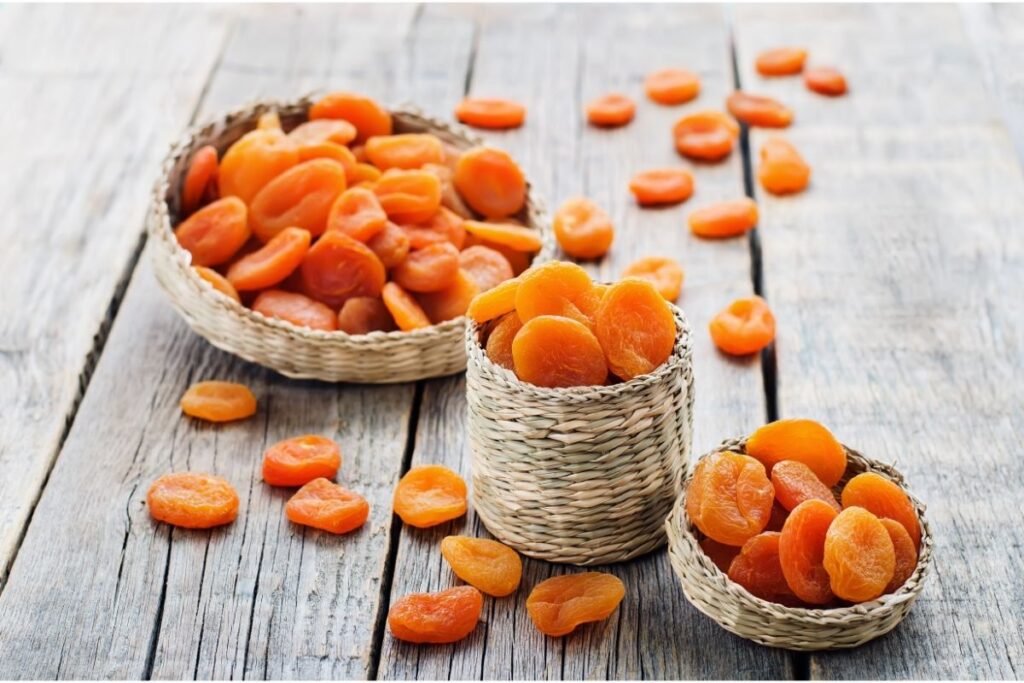
As these fruits have been dried, all the nutrients within them are just generally more concentrated. A 100 g serving of apricots provides about 3 milligrams of iron, making it a great vegan iron-rich snack.
However, there is a bit of a catch with dried fruit.
Even though they are rich in all of their constituent nutrients (because everything becomes more concentrated), they also have a higher level of sugars and carbohydrates, like fructose, than the same weight as fresh fruit.
2. Passion Fruits
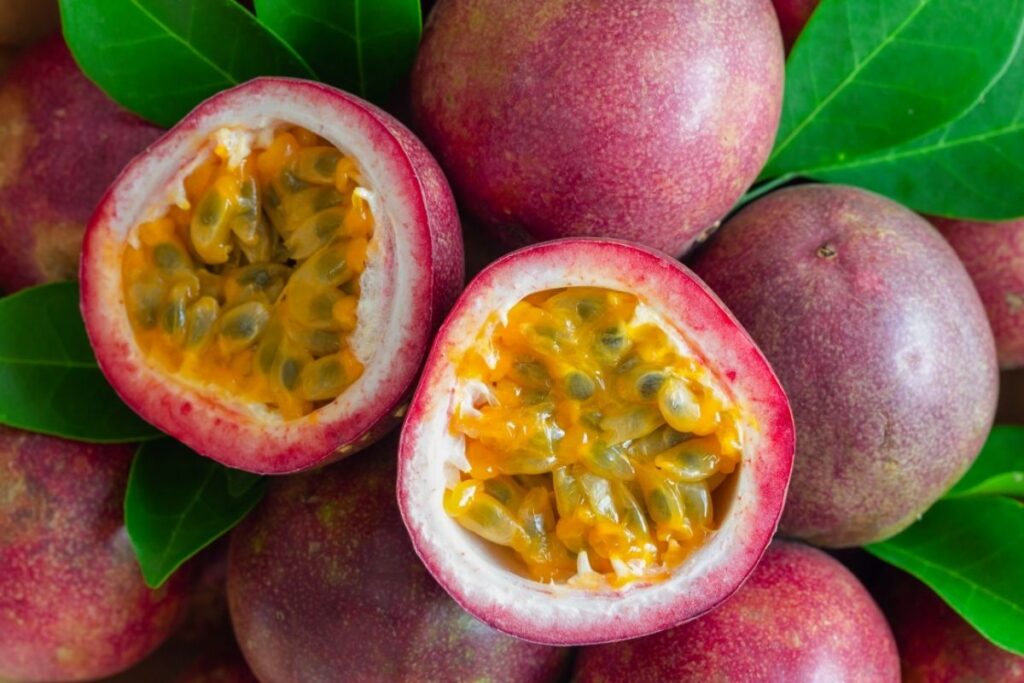
A cup of passion fruit will provide you with 4 mg of iron, as well as having really high levels of vitamin C (there is approximately 71 mg of vitamin C in a one-cup serving size of the fruit).
This is good, because vitamin C dramatically increases the level of iron your body is able to absorb, so it’s a great food for those who are iron deficient, and can greatly reduce anemia.
3. Horned Melon
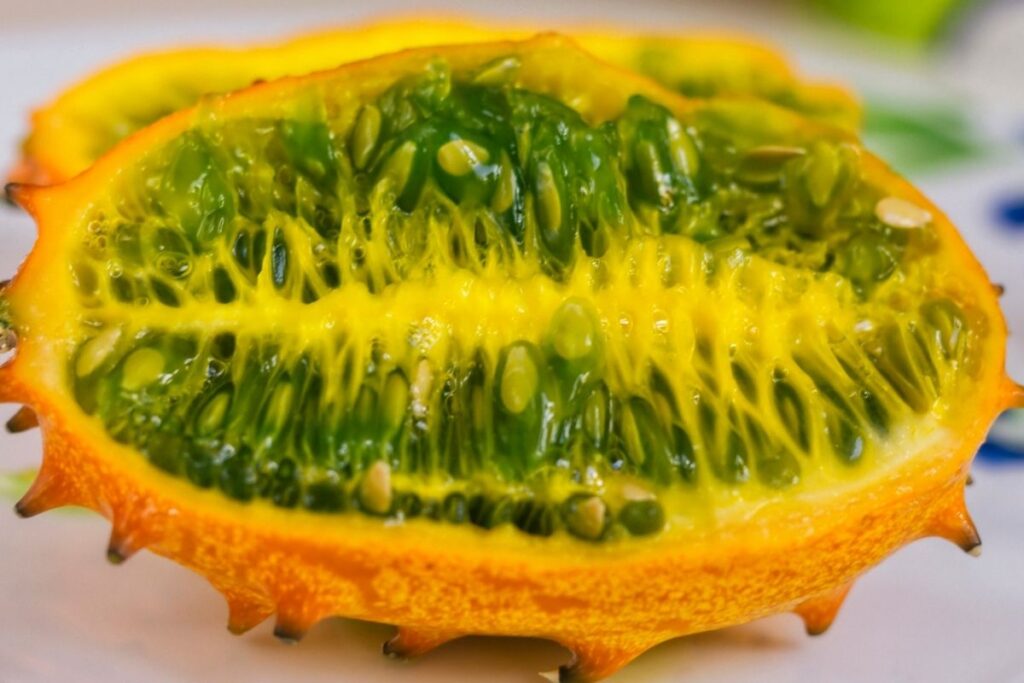
The horned melon (also known as the kiwano melon) contains a decent amount of iron for a fruit. One-cup serving size of horned melon contains about 3 mg of iron.
Like the passion fruit, it is rich in vitamin C, which enhances the body’s ability to absorb iron, so it is a great package deal for iron deficiency.
4. Avocados
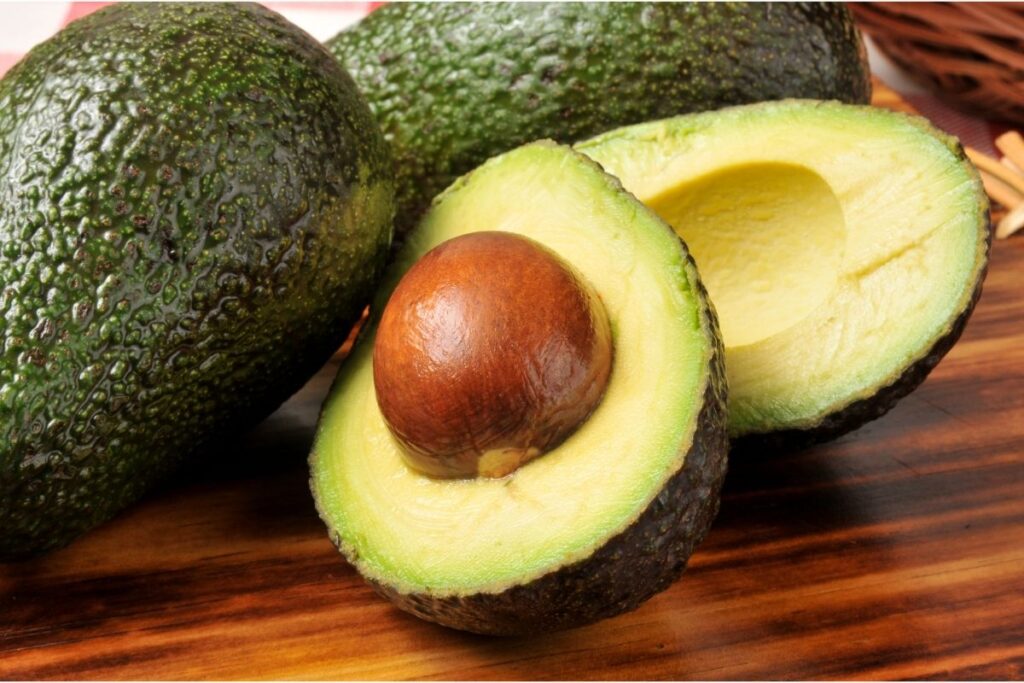
Avocado is a seeded fruit – as it contains a huge pit in the center. It also has some iron in it – with about 1 mg of iron per fruit (which translates to around 0.6 mg per 100 g serving).
This is in addition to other healthy compounds, like the antioxidants vitamins C and E, and heart-healthy fats (both monounsaturated and polyunsaturated fats).
That being said, they are not the most iron-rich food out there, so partner them up with other iron-rich foods in a meal, to boost your iron levels, and reduce symptoms of anemia.
5. Olives
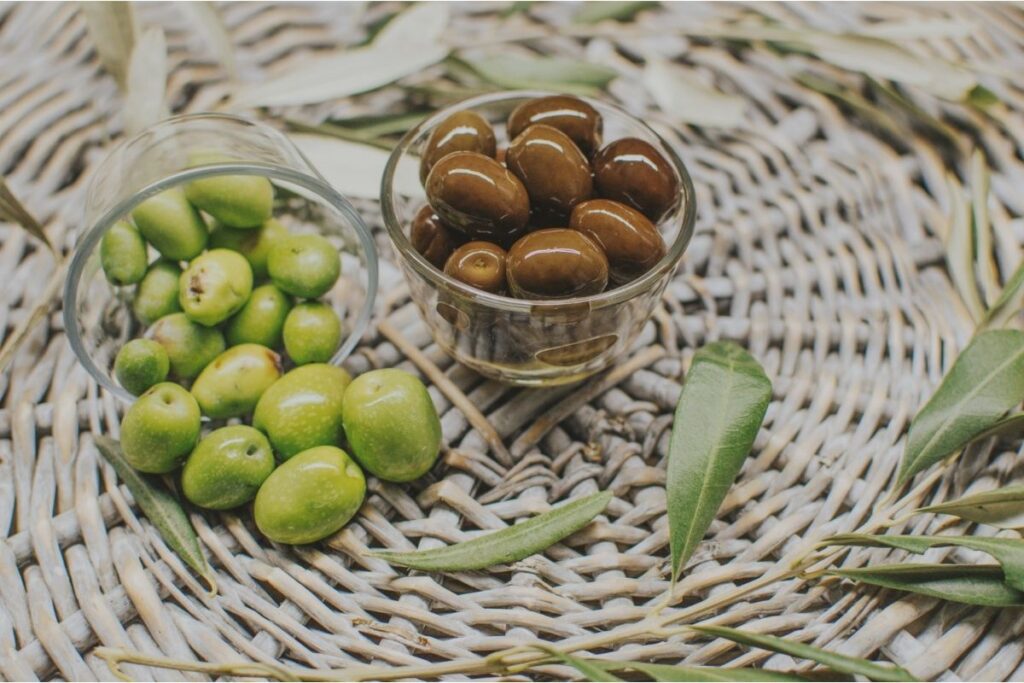
Olives, despite what you might be thinking, are fruit, as they contain a stone/pit in the center. Alongside this pit, they also contain a good amount of iron.
A single large olive can contain as much of your daily recommended iron intake as 3%. However, your iron intake is subject to the type of olive that you choose to eat…
Black olives are the best choice if you want higher levels of iron – as a serving contains about 3 mg, whereas green olives have far less, with one serving to have approximately 0.5 mg of iron.
Green olives are higher in the antioxidant vitamin E, though, helping to protect your body’s cells from damage. A serving contains approximately 4 mg of vitamin E per serving.
6. Figs
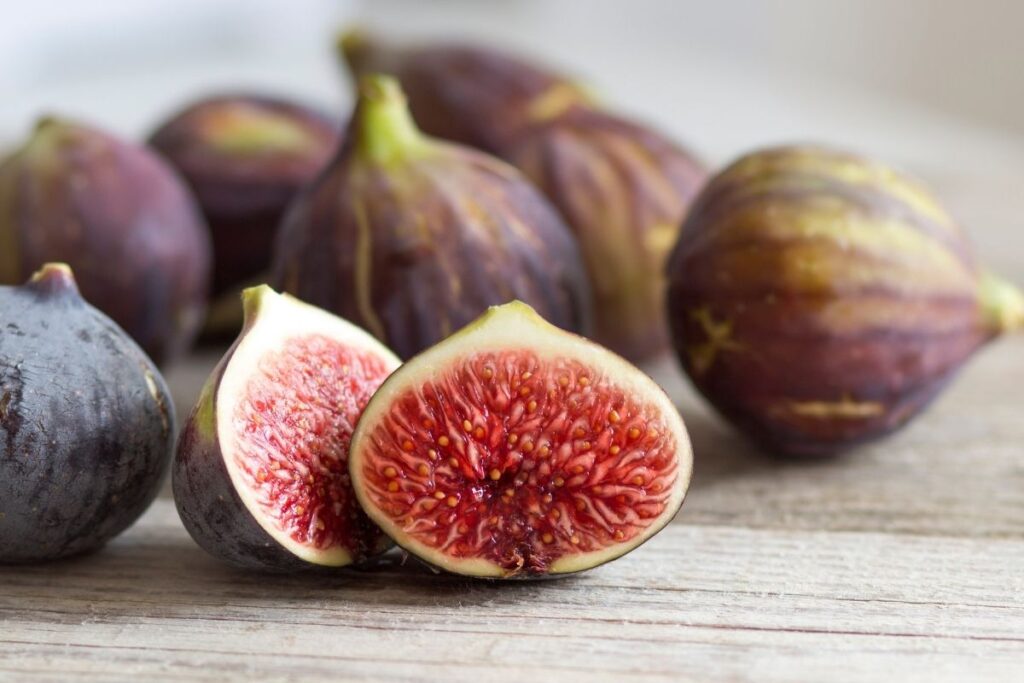
Figs are quite rich in iron for fruit, with approximately 0.37 mg of iron per 100 g serving of fresh figs, and 2 mg of iron per 100 g serving of dried figs.
However, just like the dried apricots, everything in a dried version of the fruit is more concentrated, so although you will get more iron, you will also get more carbs, sugars, and calories.
7. Mulberries
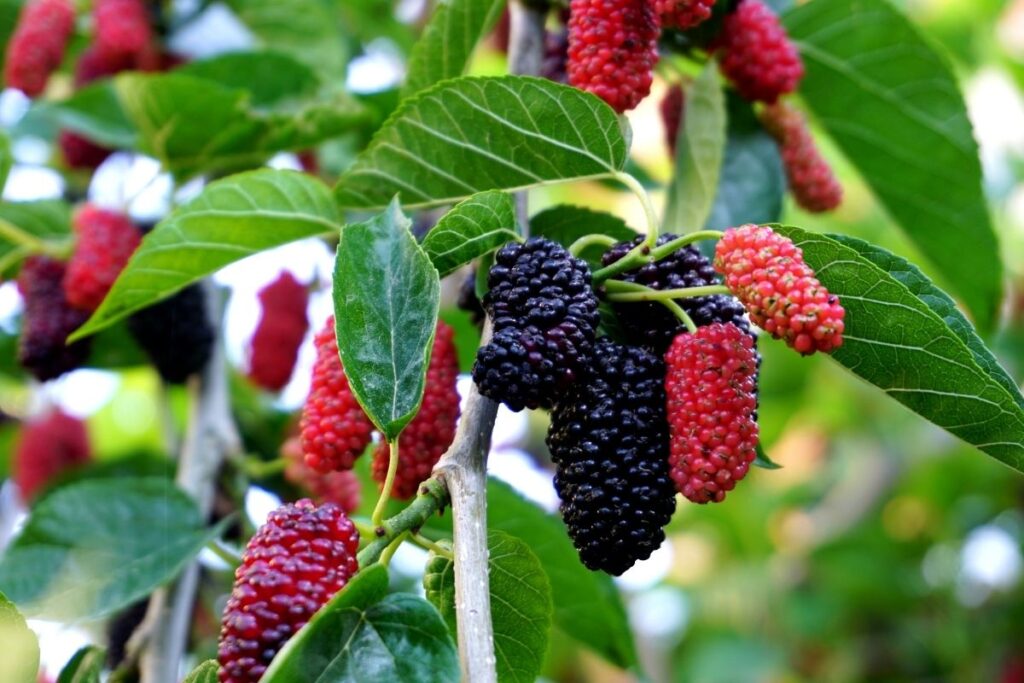
These berries are also a good source of vegan, fruit-based iron, with 2 mg of iron per 100 g of fresh mulberries.
They are also a great source of the complementary antioxidant vitamin C and have high levels of resveratrol – which is an effective antioxidant that is also found in red wine.
Factors that Affect Iron Absorption and Retention
The most important factor when it comes to absorbing and retaining iron from your food is your preexisting iron levels.
Your body is smart, so if you have a low iron level, then it will try to absorb more of the iron, whereas if you have a high iron level, then your body will absorb less of the iron.
Meat proteins will increase your body’s absorption of non-heme irons. Vitamin C will do a similar thing – but to a higher extent, increasing the absorption of non-heme iron by as much as 85%.
Going off of this – the ideal iron absorption meal might be steak, leafy green veg, and citrus fruit. Alternatively, look for supplements that are iron partnered with vitamin C.
Beverages like tea and coffee decrease the absorption of iron because the chemical compounds (such as tannins, oxalates, phylates, and polyphenols) can decrease the absorption of non-heme iron by up to 65%.
Black tea is the worst offender, and will negatively impact your iron absorption more than coffee, green tea, and white tea.
A few other beverages also inhibit iron absorption – such as peppermint tea, hot chocolate, chamomile, lime flower, vervain, and most other herbal teas (as they all contain polyphenols).
Legumes, whole grains, chocolate, and soy products can inhibit iron absorption, due to the calcium, proteins, polyphenols, and phylates in them. Even milk and antacids can inhibit absorption.
Causes of Iron Deficiency:
- Menstruation, because of the blood loss (and then replacement), which takes up a lot of iron).
- Kidney failure, especially if you are on dialysis, as the kidneys cannot create and release adequate levels of the erythropoietin, which is necessary for red blood cells to be generated (and retain iron).
- Pregnancy or lactation both used up a lot of iron, as a fetus and breast milk both take a lot of iron to produce.
- Infants and toddlers need a lot of iron as they grow, making them an at risk group for iron deficiency.
- Low levels of vitamin A, as vitamin A moves iron from storage in the body. Without adequate levels of this vitamin, the body can’t regulate iron levels, causing deficiency.
- Gastrointestinal disorders and disease can lead to inadequate nutrient absorption.
- Cancer can cause iron deficiency, with 60% of those with colon cancer having anemia, and 29% to 46% of those with other kinds of cancer having anemia.
- Heart failure, as 60% of heart failure patients are iron deficient.
Final Thoughts
Fruit and veg is part of a balanced diet.
If you think that you should be upping your iron intake because you are experiencing symptoms of fatigue, then you should incorporate iron into your diet from a range of sources.
This should include multiple sources of iron – fruit, vegetables, nuts, meat, grain, and supplements.
Fruits are a great source of iron – not because it is always the food type that has the highest levels – but because it also contains a whole hose of other nutrients and vitamins, some of which increase the absorption of iron.
Anemia is a medical condition, so always consult with your doctor if you have any worries, if your symptoms don’t seem to be getting better, and if you are planning on making any major dietary changes.
We hope you learned something from this article, here are other articles that you can learn from:
14 Fruits With Seeds (Including Pictures)
Pumpkins: Growth Time and Stages of Development From Seeds To Fruits







